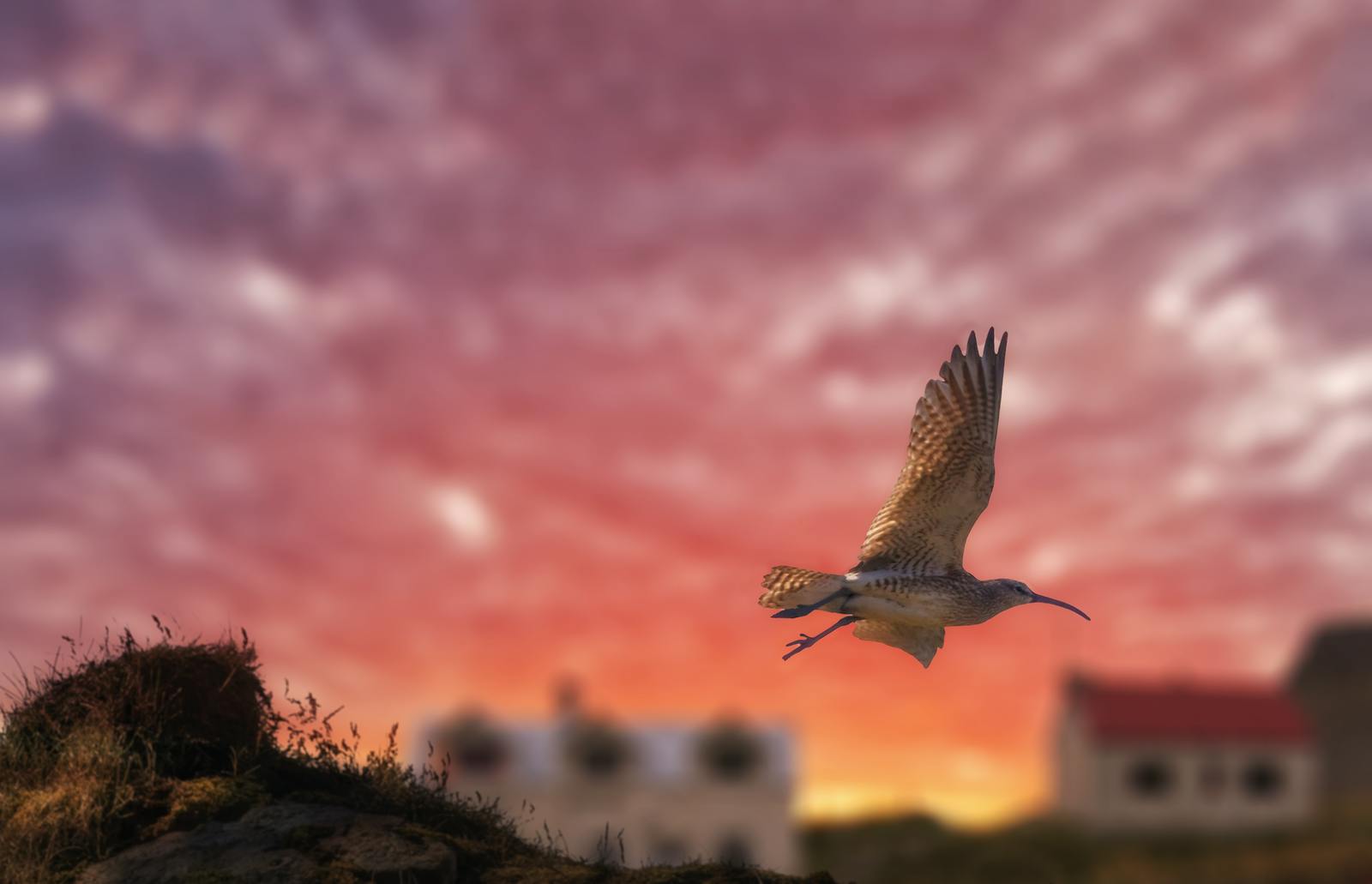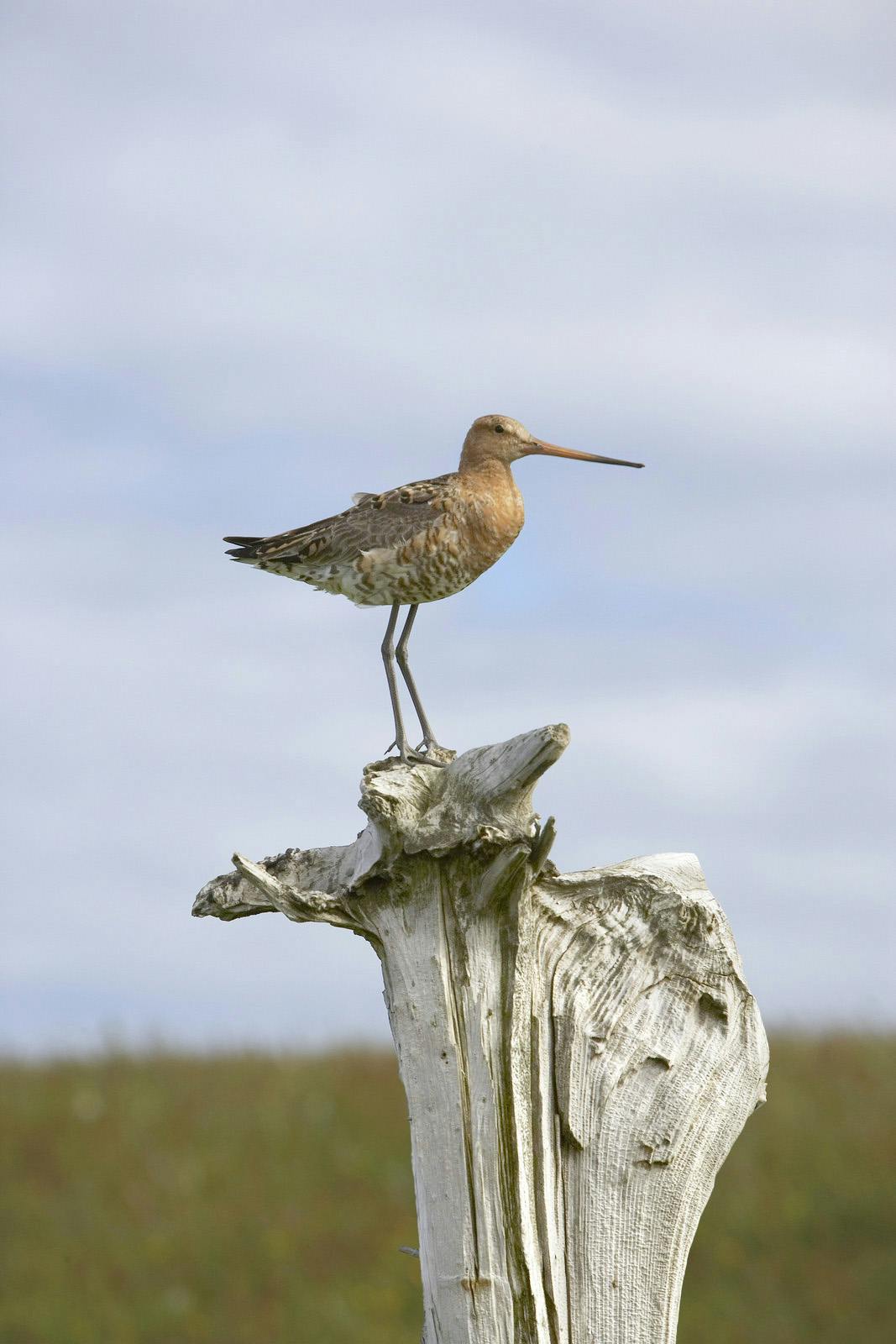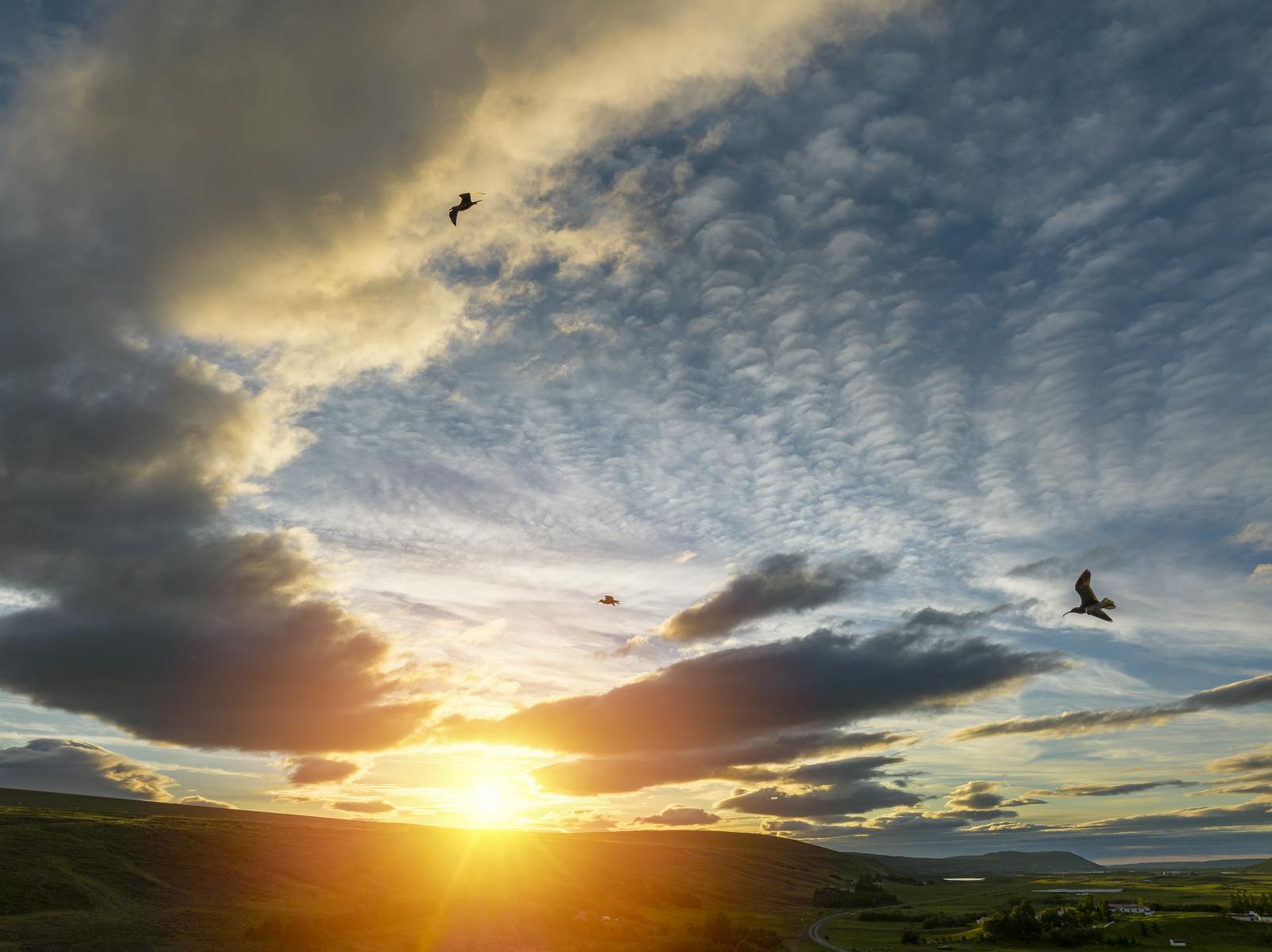
The Whimbrel Bird (Numenius phaeopus islandicus)
The whimbrel (Numenius phaeopus islandicus) is a wader (Charadriiformes) belonging to the Scolopacidae family. Members of this family in Iceland are all migratory species and have a specialised bill for invertebrate feeding. This specialised bill makes it possible for many wader species to feed in the same area without competing for food.
Experience Wildlife and Nature in One Place
Perlan stands as Reykjavik's iconic Nature Exploratorium, offering immersive learning about Icelandic nature. Explore a real ice cave, engage with hands-on exhibits, witness a life-size bird cliff, and enjoy a volcanic show. The Planetarium dome theatre showcases virtual northern lights. The Icelandic Museum of Natural History also presents a hands-on exhibition at Perlan, unravelling the mysteries of water in Icelandic nature. Read more about Perlan’s different exhibitions here.

Characteristics Of the Whimbrel
The whimbrel is a rather large wader weighing 340-510 grams (12-18 oz) and is 38-43 centimetres (15-17 in) in length. Wings are large compared to body size, with a wingspan of 30-35 inches. The whimbrel is brownish and often has a greyish colour in the plumage and bright feather tips. The belly and underwings are light coloured, but the back, neck and head are darker with a dark eyepatch. The tail has brown stripes, but the rump is white and very noticeable during flight.
The main characteristic of the whimbrel is the long bluish-grey feet and the 7-10 cm (2.75-4 in) curved bill, both of which are extremely useful when feeding in wetlands and shores. The sexes look alike, but the female is a little bit larger than the male. Juveniles look like adult birds but have shorter bills.

Population Size and Travel Habits
The whimbrel is a migratory bird and spends a short summer period in Iceland as there is a long journey ahead to the wintering grounds in West Africa. There are four subspecies of whimbrels, and the Icelandic one is a special sub-species named islandicus along with birds from Greenland, Scotland and the Faroe Islands. The breeding population in Iceland is strong, counting 250 thousand birds, which is about 40% of the world's population. It is estimated that 70% of the subspecies, islandicus, breed in Iceland.
Most whimbrels arrive in the country in flocks in the middle of May, but some may arrive in April/May. The whimbrel is abundant in lowlands all over, but fewer nests in the highlands. The main nesting habitat is on the edge of dry lands and wetlands; however, nests can be found from grassy lava fields to sandy beaches.
Whimbrels are not very social except when they migrate to and from the country in groups. They nest scarcely, and the pairs do not socialise with other whimbrels during the nesting season. Couples are monogamous, and their relationship is solid. The pair owns its territory, which it defends against predators.

Breeding Ecology and Feeding
The female lays four eggs in a small dent lined with dry hay, which is not much hidden. The eggs are light brown with darker spots and weigh about 51 grams (1.8 oz). Both sexes incubate the eggs for 27-28 days. Youngs leave the nest shortly after hatching and follow their parents to feeding grounds, where they are protected until they can fly about six weeks old. The whimbrel feeds on all sorts of invertebrates. Insects, worms, crustaceans, and berries are on the menu in the fall. The long curved bill is a useful feeding tool both on dry- and wet land.
The Whimbrel is a Traveller
In August, the birds accumulate in flocks, often seen in farmlands feeding and preparing for the long flight to the wintering grounds. In the middle of September, when a strong wind blows from the north, the flock leaves the country and heads south to warmer climates. New studies have shown that Icelandic whimbrels can fly non-stop all the way to the wintering grounds in West Africa and the trip takes only about five days with an average speed of 31 mph. Icelandic whimbrels have also been seen in Portugal and Spain, but always in low numbers.
The Whimbrels Song Is the Sound Of Summer
The whimbrel has one of the Icelandic summer’s characteristic sounds. His song, which is called “vell” in Icelandic, has been an inspiration to many poets. He is believed to be able to predict different weather with different sounds or different “vell”. If the whimbrel sings a continuous sequence of sounds that resemble a violin, it is called “round-vell” and means that winter is finally over. A rhythmic sequence with a pause between sounds is called “long-vell” and means that rainy days can be expected.

The whimbrel has many other complex sounds that inform his neighbours about what happens in his territory. The whimbrel´s “vell” along with the snipe´s (Gallinago gallinago) “neighing” and “dirrindí” of the golden plover (Pluvialis apricaria) are the sounds that every Icelander waits to hear each spring as they are symbols of bright summer nights.
Five Icelandic Facts About the Whimbrel
- The Icelandic saying „ The whimbrel sings porridge“ has its origin in the sound of boiling porridge in a pot.
- Icelandic whimbrels migrate in the fall to Senegal, West Africa, about 3100 miles. It takes them only about 80-120 hours.
- The highest flying speed during migration is 50-55 mph.
- Some whimbrels take a short break in Great Britain while migrating to Iceland in spring, while others fly non-stop all the way from West Africa.
- In Iceland, the whimbrel is sometimes called a fortune teller.
- When arriving in spring, the whimbrel brings the last winter weather to Iceland.







